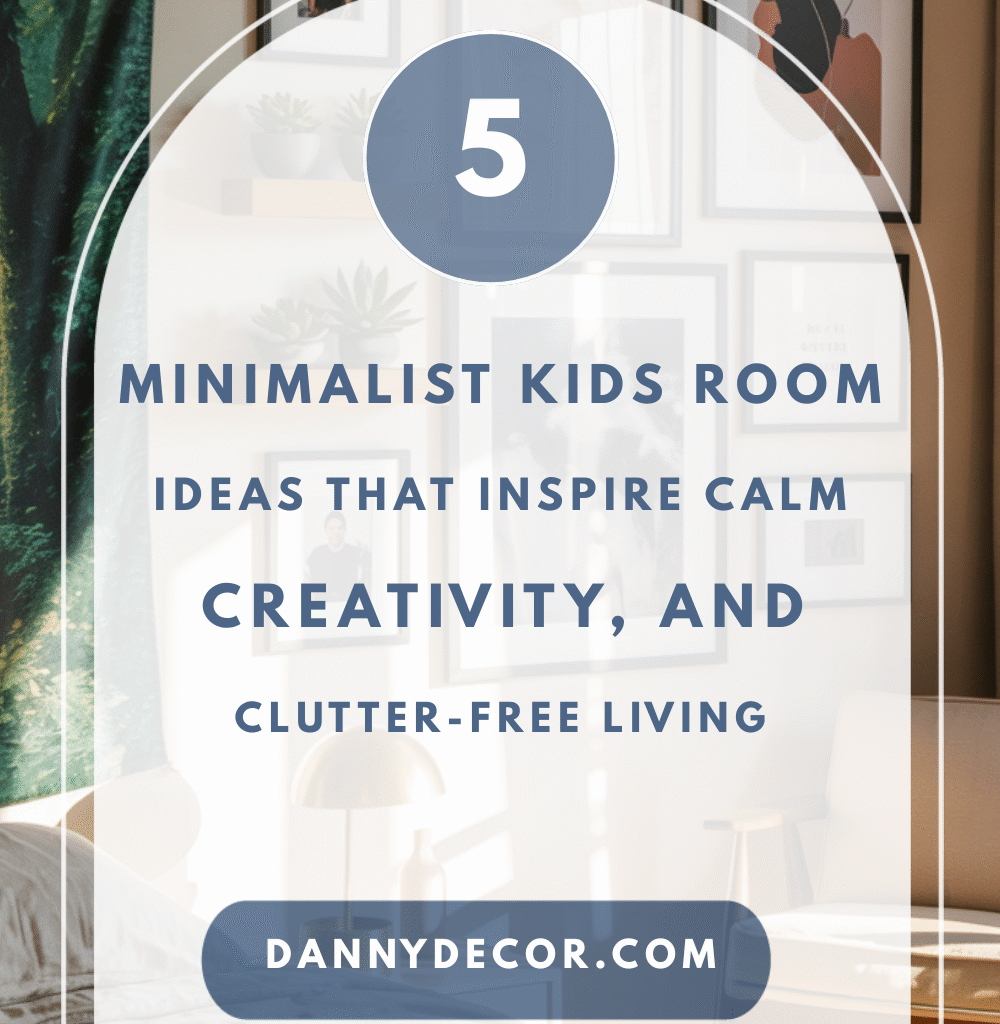
Creating a minimalist kids’ room might seem like an impossible contradiction. After all, children come with an endless parade of toys, books, clothes, and creative projects that seem to multiply overnight. But here’s what many parents discover: a thoughtfully designed minimalist approach actually makes childhood better, not more restrictive.
The magic of minimalist kids’ rooms lies in creating spaces that feel calm yet inspiring, organized yet flexible enough for real play. It’s about designing an environment where your child can focus, rest, and let their imagination flourish without the overwhelming chaos that cluttered spaces often create.
This isn’t about creating sterile, adult-focused spaces that children can’t actually use and enjoy. Instead, it’s about understanding how intentional design choices can support your child’s development while making your life as a parent significantly easier. When everything has a place and the room feels peaceful, both you and your child can breathe a little easier.
Ready to discover how minimalist principles can transform your child’s room into a space that works beautifully for real family life? These five key strategies will help you create a room that grows with your child while maintaining that sense of calm you’ve been craving.
1. Choose Simple, Functional Furniture That Grows With Your Child
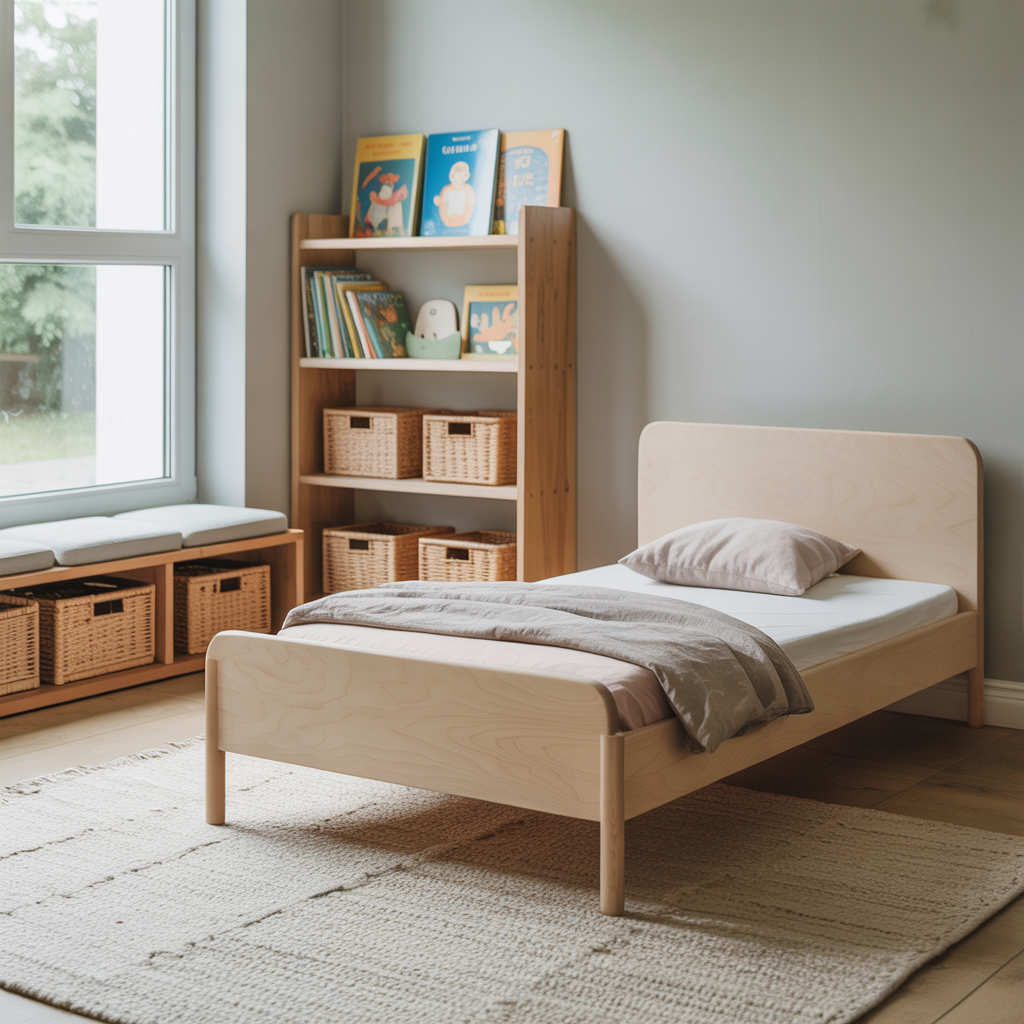
The foundation of any successful minimalist kids’ room starts with furniture choices that prioritize longevity and adaptability over trendy designs that quickly become obsolete. Think of each piece as a long-term investment in your child’s comfort and your family’s sanity.
Sturdy wooden beds with clean lines work beautifully from toddlerhood through the teenage years. Unlike character themed beds that children outgrow, simple wooden frames adapt to changing tastes and room makeovers. They’re also built to withstand the inevitable jumping, climbing, and general roughhousing that comes with childhood.
Open bookshelves with adjustable shelving are absolute game-changers for growing families. They start as picture book displays for toddlers, evolve into chapter book libraries for school-age kids, and eventually hold textbooks and personal collections for teenagers. The adjustable aspect means you’re never stuck with shelves that are too tall or too short for your child’s current needs.
Multifunctional pieces work especially well in smaller rooms where every square foot counts. Storage beds with built-in drawers eliminate the need for separate dressers while keeping clothes and extra bedding easily accessible. Under-bed storage solutions turn dead space into valuable real estate for seasonal items or rotating toy collections.
The key is choosing pieces that look intentional and cohesive rather than like a random collection of children’s furniture. When everything works together visually, the room feels more spacious and organized, even when it’s being actively used by energetic kids.
2. Create Calm with Neutral Tones and Earthy Colours
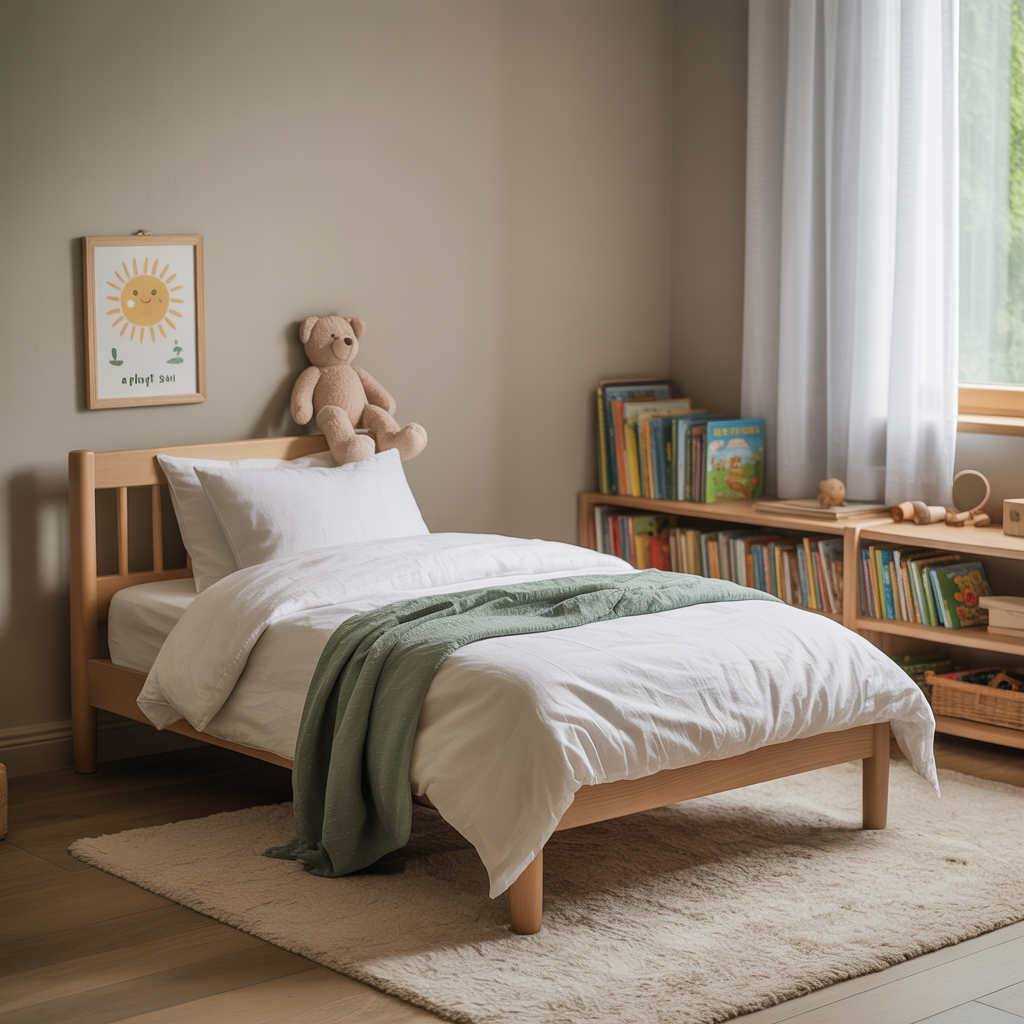
Colour psychology isn’t just trendy design theory it’s particularly powerful in children’s spaces where overstimulation can impact sleep, focus, and overall well-being. Neutral and earthy colour palettes create the perfect backdrop for childhood while promoting the peaceful atmosphere that benefits the whole family.
Soft whites, warm grays, and gentle beiges provide a calming foundation that never goes out of style. These colors make rooms feel larger and brighter while serving as the perfect canvas for your child’s artwork, favorite books, and treasured possessions to really shine.
Earthy tones like sage green, soft blue, and warm taupe add personality without overwhelming the senses. These colours connect children to nature while creating an environment that feels both sophisticated and age-appropriate. They’re also forgiving when it comes to the inevitable crayon marks and muddy fingerprints that come with real childhood.
Don’t worry about neutral colours being boring they’re actually incredibly versatile. As your child’s interests change, you can easily introduce new accent colours through bedding, artwork, or accessories without needing to repaint or replace major furniture pieces.
The beauty of neutral palettes is how they photograph beautifully for those memory-making moments while creating spaces where children can actually relax. Overstimulating colour schemes might look fun in magazines, but they often make it harder for kids to wind down at bedtime or focus during quiet activities.
3. Incorporate Soft Textures for Comfort and Warmth
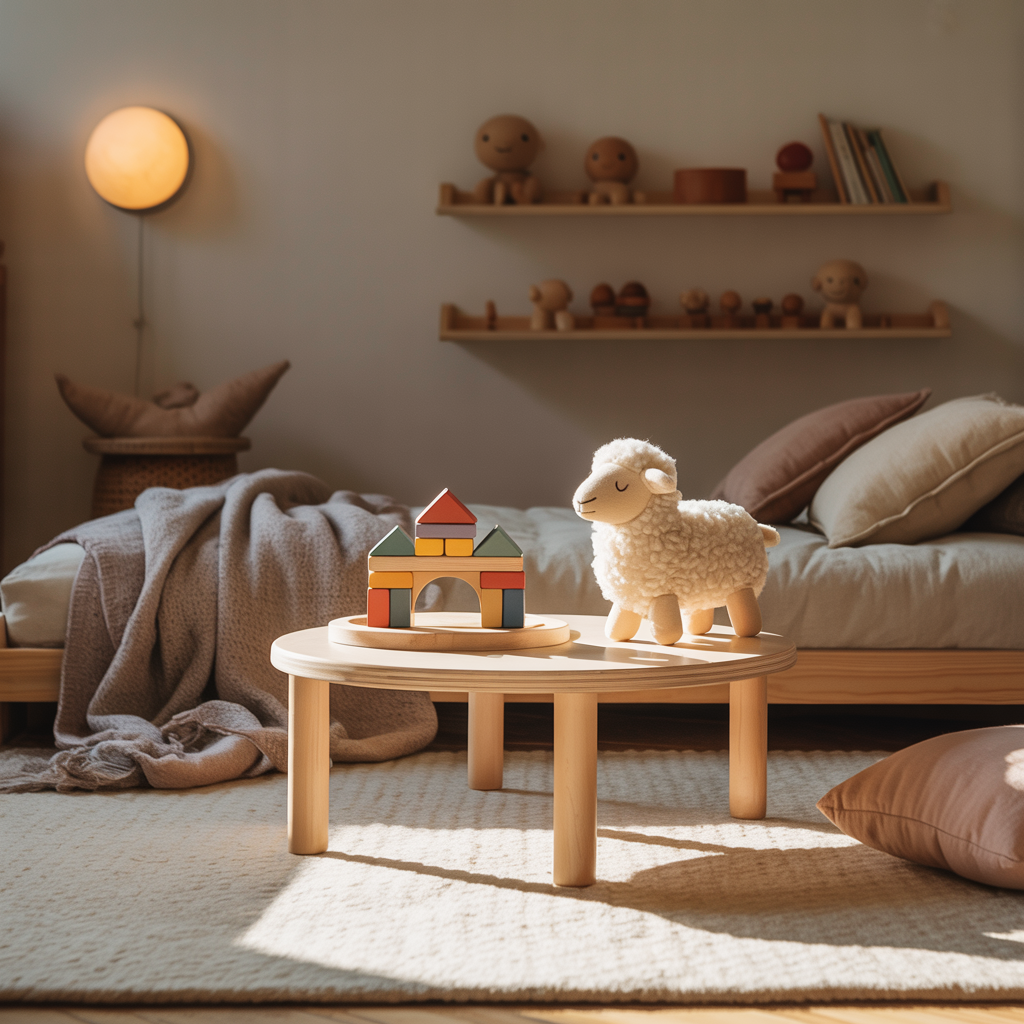
Minimalism doesn’t mean stark or uncomfortable especially in children’s spaces where comfort is essential for healthy development. The secret is layering different textures thoughtfully to create visual interest and physical comfort without adding clutter.
Cozy area rugs define play spaces while providing comfortable spots for floor activities like puzzles, building blocks, or reading. Choose rugs that are easy to clean but soft enough for hours of play. Natural fiber options like wool or cotton feel wonderful underfoot while being durable enough to handle daily use.
Plush throw blankets add warmth and comfort while serving practical purposes for movie nights, reading sessions, or when children need extra coziness during illness. Keep them in neutral colors or simple patterns that complement your overall design scheme.
Soft cushion sets create flexible seating options that children can arrange however they need for different activities. Unlike bulky furniture, cushions can be easily moved, stacked, or stored when not in use, making them perfect for minimalist spaces that need to adapt quickly.
The goal is creating layers of comfort that invite touch and use while maintaining the clean, organized aesthetic that makes minimalist rooms so appealing. When children feel physically comfortable in their space, they’re more likely to spend time there peacefully.
4. Maximize Open Space for Creative Play
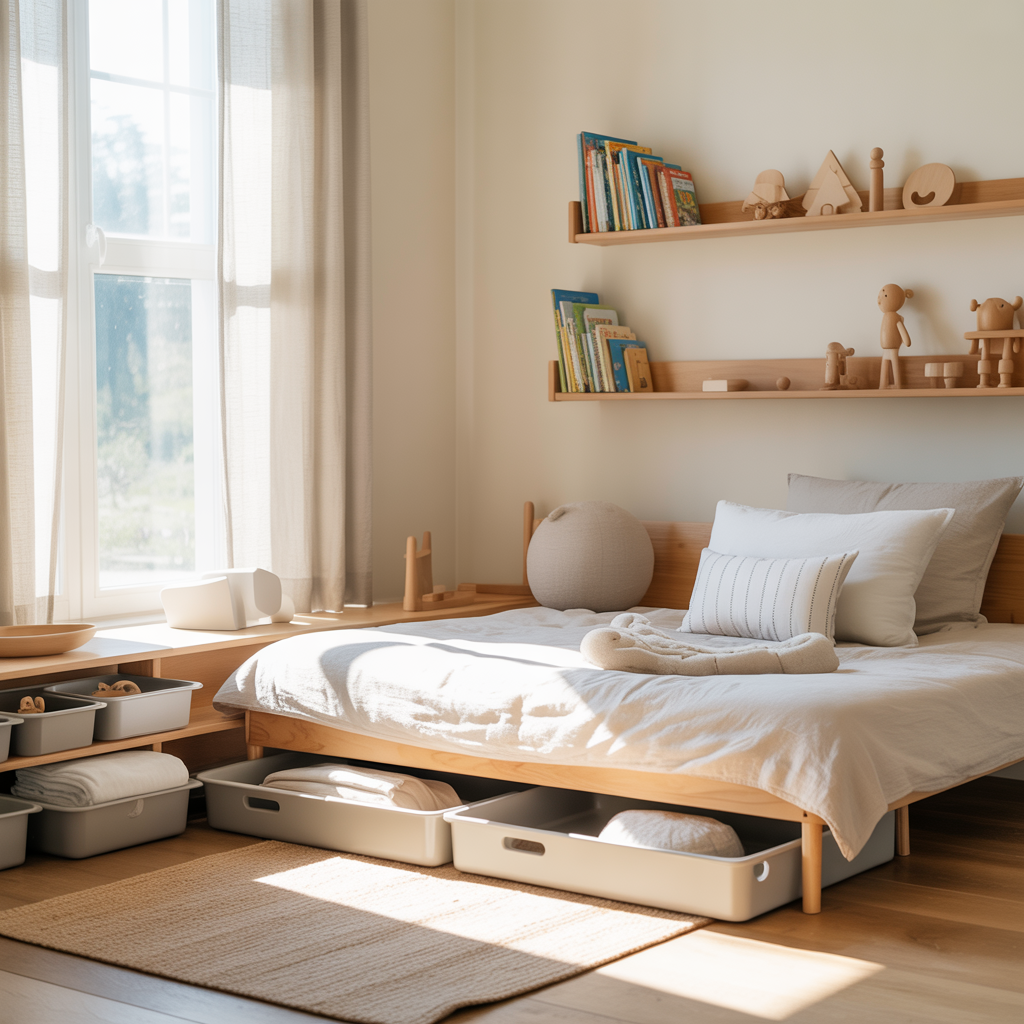
One of the most valuable gifts you can give a child is open floor space where imagination can run wild. Minimalist kids’ rooms prioritize this precious real estate by keeping furniture to essentials and using smart storage solutions that don’t encroach on play areas.
Wall-mounted storage keeps the floor clear while providing easy access to frequently used items. Floating shelves hold books and display special treasures without taking up valuable floor space. This vertical approach to storage makes rooms feel larger while teaching children to think creatively about organization.
Under-bed storage solutions are invisible when not in use but provide ample space for toys, games, and seasonal clothing. Rolling storage bins make it easy for children to access their belongings independently while keeping everything contained and organized.
Foldable play mats define activity areas when needed but can be easily stored when it’s time for other activities or room cleaning. This flexibility allows the room to serve multiple purposes throughout the day without feeling cramped or cluttered.
Open space isn’t just about aesthetics – it’s about giving children room to move, dance, build elaborate block towers, and engage in the kind of physical play that supports healthy development. When rooms feel spacious, children naturally feel more relaxed and creative.
5. Add Thoughtful Personal Touches That Inspire
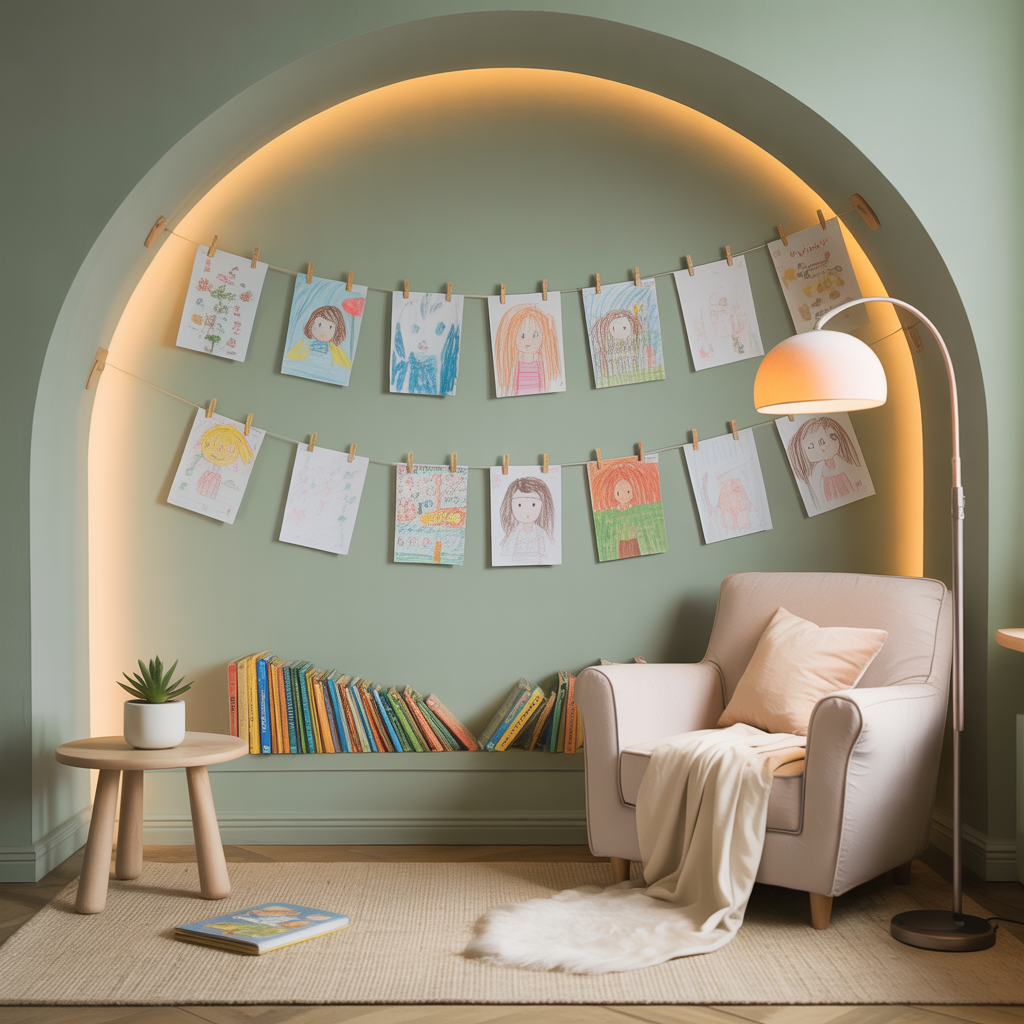
The most successful minimalist kids’ rooms strike the perfect balance between calm simplicity and personal expression. The key is choosing meaningful decorative elements that reflect your child’s personality without overwhelming the peaceful atmosphere you’ve created.
Minimalist wall art with simple line drawings or nature-inspired prints adds character without visual chaos. Choose pieces that will grow with your child rather than overly juvenile designs that quickly feel outdated. Abstract prints or botanical illustrations work beautifully and complement the neutral color palette.
Create a dedicated space for displaying your child’s artwork using simple frames or a hanging system with clips and string lights. This shows respect for their creativity while keeping the display organized and intentional rather than random papers taped everywhere.
A cozy reading nook with a comfortable chair, good lighting, and accessible book storage encourages quiet activities while adding a special element that makes the room feel uniquely theirs. This becomes a retreat within their room where they can recharge and enjoy peaceful moments.
Nature-inspired elements like small potted plants, wooden accessories, or stones and shells from family adventures bring life and connection to the outdoors without requiring extensive maintenance or creating clutter.
Creating Spaces That Support Growing Children
Designing a minimalist kids’ room isn’t about depriving children of joy or creativity – it’s about creating an environment that supports their natural development while making family life more peaceful and manageable. These spaces become havens where children can rest, play, and grow without the overwhelming chaos that cluttered rooms often create.
The beauty of minimalist design is how it adapts and evolves with your child. As their interests change and they grow into new phases, the neutral foundation and flexible storage solutions make it easy to update the room without starting from scratch.
Remember that minimalism with children is an ongoing practice, not a destination. There will be messy days, creative explosions, and times when the room doesn’t look like a magazine photo – and that’s perfectly okay. The goal is creating systems and spaces that support real family life while maintaining the peaceful foundation that benefits everyone.
Start with one or two changes that excite you most, whether that’s introducing calming colors, creating more open floor space, or investing in furniture that will grow with your child. Small, intentional changes often have the biggest impact on how a room feels and functions.
Most importantly, involve your child in the process when age-appropriate. When children help create their space and understand the reasoning behind organizational systems, they’re more likely to maintain and enjoy their minimalist room. After all, the best kids’ rooms are the ones that actually work for the children who live in them.

Add a Comment